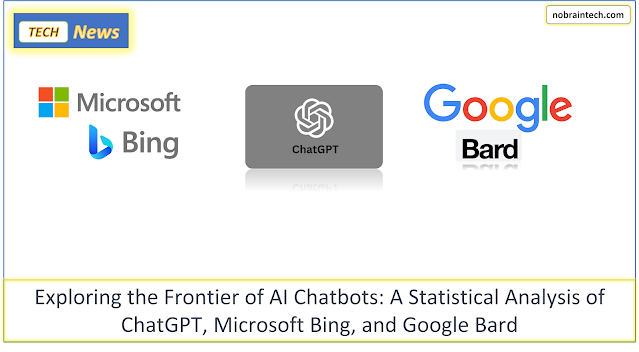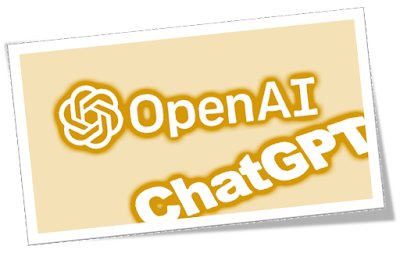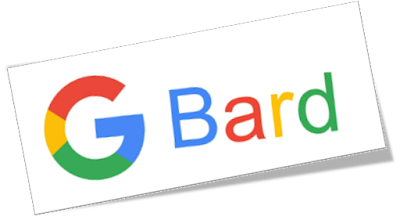Comparing AI Chatbots: A Look at the Current Statistics of ChatGPT, Microsoft Bing, and Google Bard
If you are interested in artificial intelligence and chatbots, you have probably heard of ChatGPT, Microsoft Bing, and Google Bard. These are three of the most popular and advanced AI chatbots available today, but how do they compare with each other? In this blog post, we will look at some of the current statistics and features of each chatbot, and see which one is the most helpful for different tasks and scenarios.
ChatGPT: The pioneer of generative AI
- It has the ability to produce captivating and diverse responses on any subject or question.
- It can handle intricate and nuanced scenarios and inquiries proficiently.
- It can create top-notch content suitable for various domains and objectives.
- It can learn from user feedback and preferences, enhancing its performance.
- The responses may contain factual errors or inconsistencies on occasion.
- It can generate inappropriate or harmful content at times.
- The responses can become too wordy or repetitive.
- It can sometimes be influenced by biases or stereotypes, leading to inaccurate or biased outputs.
Bing: The web search engine with a chatbot twist
- It can deliver trustworthy and pertinent information from the internet.
- It has the ability to produce supporting images and charts alongside its answers.
- It offers sources and citations for its statements and facts.
- It can handle various languages and domains effectively.
- The responses can be overly literal or generic at times.
- Its reliance on web sources and data can sometimes be excessive.
- The functionality can be sluggish or restricted in some situations.
- The results can be influenced by commercial or political interests on occasions.
Bard: Google's attempt to catch up with generative AI
- It can provide concise and relevant responses to users' queries.
- It can leverage Google's expertise and resources in web search and AI.
- It can offer some humor and personality in its responses.
- It can handle multiple languages and domains.
- It can sometimes make factual errors or inconsistencies.
- It can sometimes generate responses that don't make sense or are irrelevant to the user's query.
- It is not as advanced in its natural language processing capabilities as ChatGPT or Microsoft Bing.
- It is limited to certain pre-programmed responses and may not be able to handle complex conversations as well as other chatbots.
- It lacks the ability to generate original or authentic content that reflects the user's personality or preferences.
- Unlike ChatGPT and Bing, it's not good in capturing the nuances and subtleties of human creativity, such as humor, irony, or sarcasm.
|
Chatbot |
Advantages |
Disadvantages |
|
ChatGPT |
· It can generate
accurate, relevant, and creative answers by understanding the overall context
of a question or conversation. · It can handle
multiple domains and tasks, such as answering
questions, writing essays, composing poems, generating code, and more. · It can
adapt to different tones, styles, and personalities based on the user's input
or preferences. · It can
learn from previous conversations and use them to improve its responses over
time. · It is one
of the most powerful and versatile language models available today, with a
large vocabulary and a deep understanding of natural language. · It can
produce novel and engaging content that can entertain, inform, or persuade
users. · It can
handle complex and open-ended queries that traditional search engines cannot. |
· It is not
always reliable or accurate, as it may make factual errors or generate
nonsensical or inappropriate text. · It may
not respect ethical or social norms, as it may generate harmful or offensive
content that violates copyrights or privacy. · It may
not be suitable for sensitive or regulated domains, such as health care or
finance, where accuracy and trustworthiness are crucial. |
|
Bing |
· It can generate text and images based on the
user's query or prompt. For example, it can generate a logo for a company
name or a caption for an image. · It can provide relevant and comprehensive
information from various sources on the web. For example, · It can provide news articles, videos, maps,
factsheets, etc. · It can offer suggestions and recommendations
based on the user's intent and preferences. For example, · It can suggest products to buy, places to
visit, movies to watch, etc. · It is one of the most popular and widely
used search engines in the world, with a large user base and a rich index of
web content. · It leverages the power and versatility of
ChatGPT to provide natural language interaction and generation capabilities. · It goes beyond text and can generate images
that match the user's query or prompt. |
· It shares some of the limitations and
challenges of ChatGPT in terms of reliability, accuracy and ethics. · It may not always provide the best or most relevant results for some queries or prompts as it may depend on the quality and availability of web content. · It may not be able to handle some
specialized or niche domains or tasks that require domain-specific knowledge
or expertise. |
|
Bard |
· Performs
better for creative and conversational queries. · It can
generate more diverse and fluent texts on various topics. · It can
also use code snippets to demonstrate its skills and knowledge · It can
use natural language and humor to engage users in dialogue. · It can
also adapt its tone and style to different contexts and scenarios. |
· Lacks
behind for factual and informational queries · Not as
precise as other Bing and ChatGPT and may give wrong answers · AI Image
creation is missing · Not publicly
available to all users worldwide · Missing sources
in answers |
Conclusion
We’re excited for this phase of testing to help us continue to learn and improve Bard’s quality and speed — but we’re even more excited about what this technology could mean for everyone.














No comments: